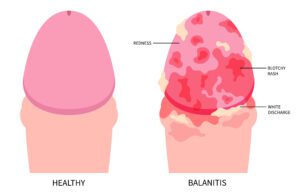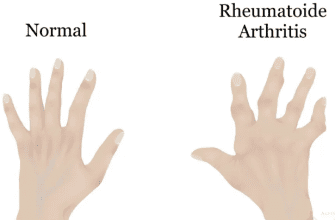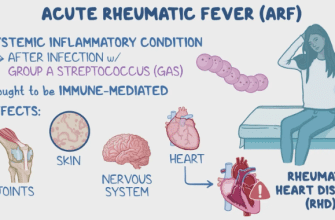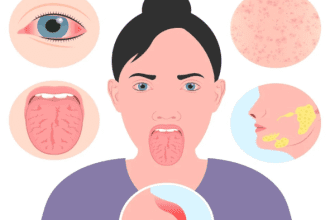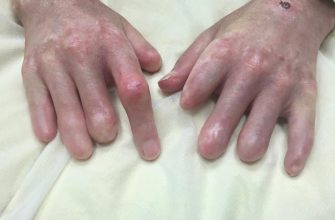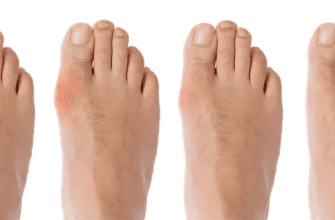Balanoposthitis is an inflammation of the glans (head) of the penis and the surrounding foreskin (prepuce). It can occur in males of any age, including infants, but it is most common in uncircumcised males.
Etiology
- Infectious Causes:
- Bacterial Infections: Often caused by skin flora such as Staphylococcus and Streptococcus.
- Fungal Infections: Candida species are particularly common, especially in cases associated with diabetes.
- Sexually Transmitted Infections (STIs): Such as herpes simplex virus (HSV), human papillomavirus (HPV), and syphilis.
- Non-infectious Causes:
- Irritation and Contact Dermatitis: Caused by soaps, detergents, or hygiene products.
- Poor Hygiene: Accumulation of smegma and lack of proper cleaning can lead to irritation and infection.
- Allergic Reactions: To materials such as latex in condoms or lubricants.
Causes and Risk Factors
- Poor personal hygiene: Inadequate washing of the genital area can lead to irritation and infection.
- Diabetes: Increased glucose levels can create an environment conducive to infections.
- Phimosis: The condition of having a non-retractable foreskin.
- Sexual activity: Unprotected sexual intercourse can expose individuals to STIs.
- Skin conditions: Such as eczema or psoriasis affecting the genital area.
Symptoms
- Swelling and redness of the glans and foreskin.
- Pain or tenderness in the affected area.
- Itching and irritation.
- Discharge from under the foreskin (may be purulent if infected).
- Foul odor.
- Difficulty retracting the foreskin (if phimosis is present).
Prevention
- Good Hygiene Practices: Regular cleaning of the genital area can help prevent buildup of smegma and irritation.
- Proper Lubrication: During sexual activity to prevent irritation.
- Safe Sexual Practices: Using condoms to reduce the risk of STIs.
- Monitoring and Managing Underlying Conditions: Such as diabetes.
Diagnosis
- Clinical Examination: Inspection of the genital area to assess for swelling, redness, discharge, or lesions.
- Patient History: Discussing hygiene practices, sexual history, and any accompanying symptoms.
- Laboratory Tests: Swabs may be taken for cultures to identify bacterial or fungal infections. Blood tests may be conducted to check for diabetes or other systemic issues.
Treatment
- Hygiene: Improved hygiene and regular cleaning of the area.
- Topical Treatments: Antifungal or antibacterial creams for infections.
- Systemic Medications: Oral antibiotics or antifungals may be prescribed based on the specific causative agent.
- Corticosteroids: In cases of non-infectious inflammation or dermatitis.
- Surgery: In severe cases, or if phimosis is contributing (e.g., circumcision).
Complications
- Chronic Balanoposthitis: Recurring inflammation may occur if underlying issues aren’t addressed.
- Phimosis: Severe swelling can lead to inability to retract the foreskin.
- Paraphimosis: A situation where the retracted foreskin cannot be returned to its normal position, causing swelling and vascular compromise.
- SCarring or Tightening: Leading to further complications with foreskin retraction.
- Sexual Dysfunction: Discomfort or pain during sexual activity can lead to issues with sexual health.
- Increased Risk of STIs: Untreated infections can increase the likelihood of transmitting or acquiring STIs.
